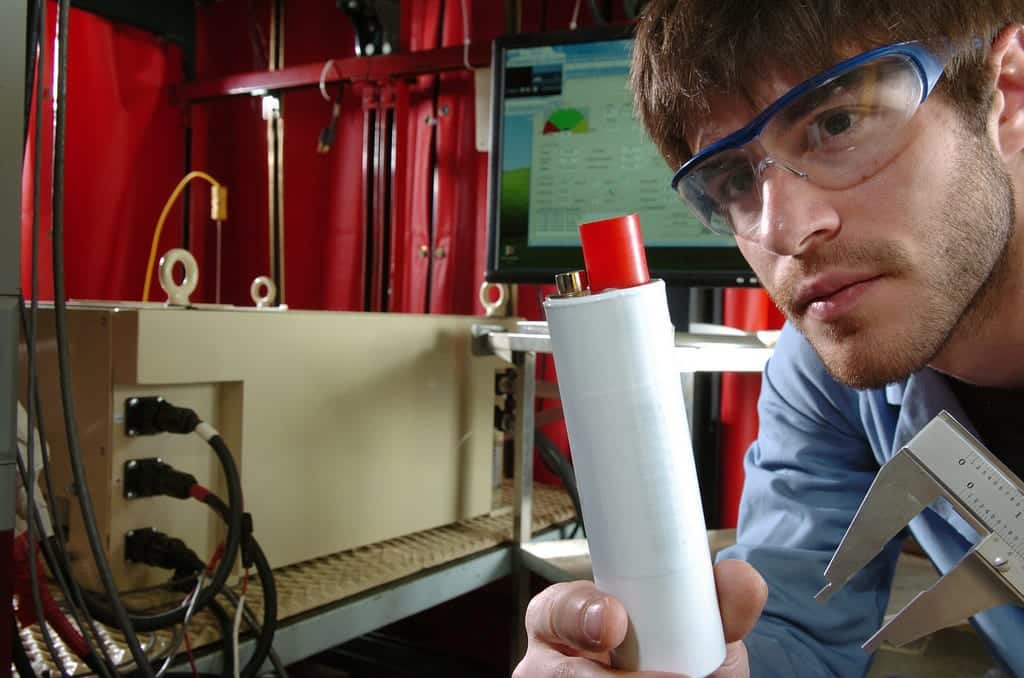Researchers at the Queensland University of Technology in Brisbane, Australia have developed a new carbon-based supercapacitor (otherwise known as ultracapacitor) film technology with an improved power density. This enables it to provide larger bursts of power for acceleration. This just means it can discharge its energy more quickly.

Image obtained with thanks from Argonne National Laboratory on Flickr.
According to the Queensland University of Technology’s website:
‘Vehicles need an extra energy spurt for acceleration, and this is where supercapacitors come in. They hold a limited amount of charge, but they are able to deliver it very quickly, making them the perfect complement to mass-storage batteries,’ said Marco Notarianni, a PhD researcher.
‘Supercapacitors offer a high power output in a short time, meaning a faster acceleration rate of the car and a charging time of just a few minutes, compared to several hours for a standard electric car battery.’
This supercapacitor technology is intended for use in conjunction with conventional lithium-ion batteries which have a much higher energy-to-weight ratio (gravimetric energy density) of approximately 110 Wh/kg. Supercapacitor technology is normally below 30 Wh/kg. This means that 1 kg of average lithium-ion batteries can store 110 Wh of energy.
Better Lithium-ion Battery Technology Exists, But Is It Worth Implementing?
There are lithium-ion batteries on the market which can achieve an impressive 243 Wh/kg. These are the Panasonic NCR18650B cells. These may be the holy grail of battery technology (on the market), but they cost more than conventional li-ion batteries.
The initial cost of electric vehicles is one of the greatest issues the EV industry faces, but this doesn’t mean that more expensive batteries can’t help them. Pricing isn’t everything. Despite the fact that the cost of electric cars is such a huge issue, the EV industry is not using the cheapest batteries
Why?
The cheapest batteries I mentioned are lead-acid. Their gravimetric energy density is a low 30-40 Wh/kg, and their gravimetric power density is also a low 180 W/kg.
- For every mile of range, many more lead-acid batteries are needed. To be frank, a boat load of lead-acid batteries weighing thousands of pounds is required to achieve very little range. That is costly.
- The increased weight of the vehicle requires a more powerful (and more expensive) motor to compensate for the decline in performance.
- The vehicle needs to be larger if it is to accommodate 4 passengers plus the bulky batteries.
The best supercapacitors on the market can recharge fully in 1 second.
Charge time is another major factor affecting electric vehicle adoption. To be fair: Electric vehicles can be plugged in at home, unlike gasoline-powered vehicles, but fast charging would be tremendously helpful because it would mitigate or virtually eliminate the issue of range anxiety.
How? Imagine driving to a location, and your battery starts running low. If you could just drop by a charging station and be on your merry way in a few minutes, you wouldn’t be worried.
However, knowing that you would have to sit for hours waiting for it to charge would worry you. You need to be able to get your errands done and get home in a timely manner. My point is: If electric vehicles could recharge quickly enough, range would not be an issue, even if it was only 100 miles per charge. You could keep recharging along the way to your destination.
Fortunately, lithium titanate battery technology can recharge in about 5 minutes. It was used in the Honda Fit EV. Hopefully it catches on in the near future.
‘In the future, it is hoped the supercapacitor will be developed to store more energy than a Li-Ion battery while retaining the ability to release its energy up to 10 times faster – meaning the car could be entirely powered by the supercapacitors in its body panels.’
‘After one full charge this car should be able to run up to 500km – similar to a petrol-powered car and more than double the current limit of an electric car.’, said research fellow Dr. Jinzhang Liu.








